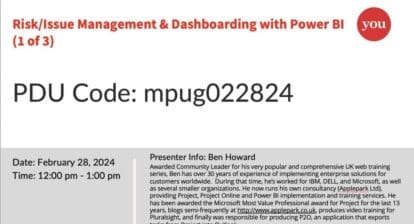The project management office — much like a computer — becomes ineffective and inefficient over time and sometimes requires a reboot. Rebooting a computer resets the system, clears out cache, releases memory and updates drivers. Once the computer system is back up and running, presumably it runs faster and more efficiently. You could look at the PMO in the same way.
The average lifetime of a PMO is about five and half years. Think about what has happened in the five years after a PMO has launched. Executive management and sponsors have probably been promoted, left the company or retired, which means someone else has inherited it. Processes and procedures become stalled and ineffective over time. The project management system may not be the latest and greatest. Newer project managers may have begun incorporating agile into their processes, creating chaos and confusion. Likewise, newer people may be asking, “Why are we doing it this way?” The original vision and purpose of the PMO will have changed over time. The PMO role and reach may need to expand and align with human resources or contract management. It’s clear that many events can occur with the passing of time. But instead of letting the PMO continue to become increasingly ineffective, perhaps it just needs a reboot.
What does it mean to reboot the PMO? It’s just a matter of revisiting the vision and purpose of the PMO and ensuring that it still aligns with its mission. How do you do this? Here’s my suggested list of activities:
- Verify PMO executive support.
- Write a PMO reboot plan and schedule.
- Review the PMO vision and core values.
- Review the PMO scope such as portfolios, program and projects.
- Review the PMO maturity model.
- Review the staffing and resources required for the PMO.
- Review PMO training, mentoring and coaching.
- Review PMO “mythologies” and processes.
- Review PMO reporting meeting management requirements.
- Review PMO standards for reporting.
- Review PMO security and access permissions.
- Review PMO tools, projects and software.
The last step provides a key point. Companies often upgrade Microsoft Project Server without thinking about rebooting their PMO at the same time. Yet the cycle could work out nicely — to change out the software while also reflecting on what has changed over the years and how the new features can be incorporated into the PMO’s revamped operations to make both work better for your organization. For example, it may be time to consider some stretch goals for the PMO that incorporate Project Server features such as timesheets, resource engagements, portfolio management or workflow.
Time flies. Maybe it’s time for you to consider your PMO reboot.
When was the last time you rebooted your PMO? Share the details with the MPUG community in comments below.







